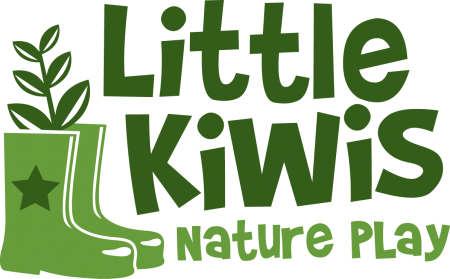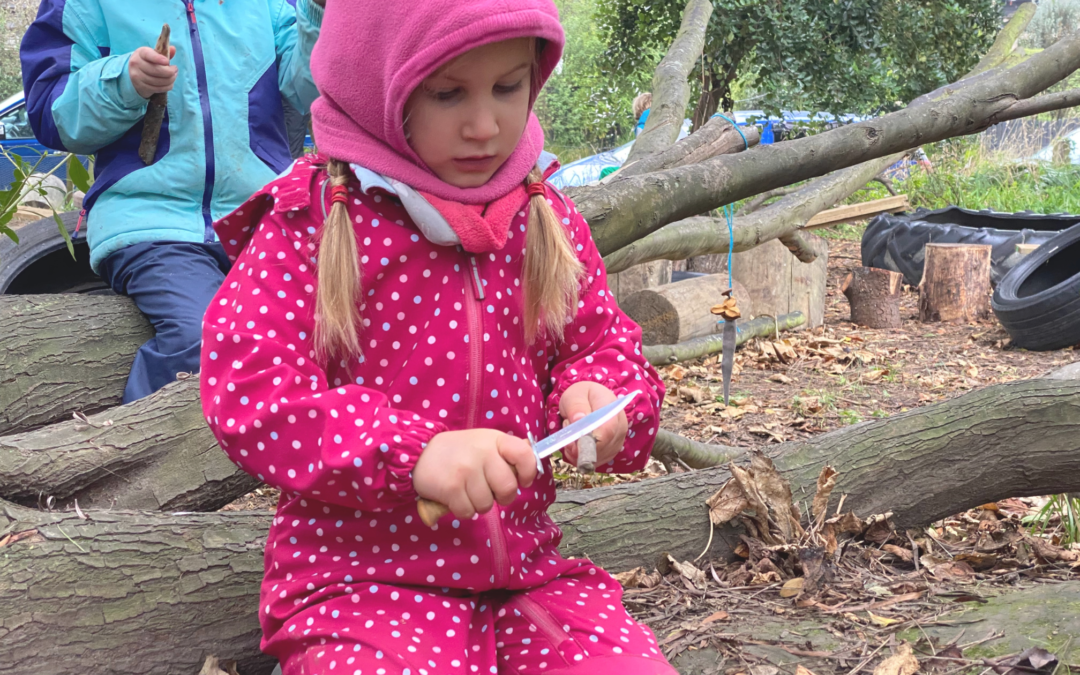‘Morena’ I answered. My facilitator replied ‘I have been dealing with an incident with a knife, the child is ok and the situation is under control. He is heading to A&E now.’
‘I just wanted to ring you as part of the SOP (safety operational procedure) now that the situation is under control.’
Fantastic I thought – the good ol’ SOP is working its magic.
I asked a few questions to establish what had happened, the severity, how the child was, how the group was, how she is doing and what support was needed.
WHAT HAPPENED
A 3-year-old (nearly 4) had been cutting fruit and vegetables that had been foraged. He was with his father and was putting the knife back in the sheath. Instead of the knife going into the sheath, it slipped to the outside and the point went into the end of the child’s index finger.
His finger started bleeding a lot. Pressure was applied and the adults stayed calm.
The first aid kit was sought and first aid was administered. On that day we were grateful that one of the parents, who is a paramedic, was there and was able to step into the role of the first aider.
Initial reports to me were that it was a cut to the finger, with lots of bleeding and it was recommended to go to the hospital.
The rest of the group was managed and cared for throughout. I asked how the other children and parents were feeling and if support was needed there.
The language from the group was that it was a mishap and they saw it as a learning injury. There was a reflective conversation at the end of the day to check in with everyone – allowing any group members to voice their thoughts if needed.
From my stance, at the time it sounded like a cut to the finger and all was good.
IMMEDIATE FOLLOW-UP
I messaged the parents a couple of hours later to follow up with how their son was doing at the hospital.
‘The knife has cut through tendons and nerves. He needs surgery.’
What appeared to be ‘just a cut’ had turned into something much more significant.
The reflections and questions started rolling around in my head.
Was this preventable? What do the SOPs say? Do the SOPs cover everything that is needed? Did I provide enough training? Were enough explanations and support given to parents and children? Is our first aid kit fit for purpose? Was it managed effectively? Was it preventable?
I asked that last question a lot.
THOUGHTS AND FEELINGS
When something significant happens like this, the feelings that can be brought up are intense, or all involved.
- For the facilitator, there were feelings of doubt and anxiety. Feeling that she had done something wrong, wondering if she could have done something different to prevent the accident, as well as embarrassment and shame. She also had thoughts that perhaps she wasn’t the right person for the job.
- The father had feelings that were similar. He said he was there to protect his son and he felt he had let harm come to his child. He felt guilty, he felt embarrassed, and he felt some shame too.
- I was both worried for the child and scared that I might not have a robust safety system in place, it brought up feelings of worry and uncertainty. I replayed over and over in my head what happened and thought what if we had done this or that, would that have changed the outcome?
This replaying over and over, is hard to deal with after an incident. It can also generate thoughts of quitting and finishing. I definitely thought – man I should just stop this Bush Kindy stuff as I don’t want anything else to go wrong.
Having experienced a few crises and high-stress situations in my outdoor career, I know that this is a normal part of the process. It is how our brain deals with stressful situations. We become unregulated and are guided by our limbic brain – emotions, then with time, we come back into our prefrontal cortex.
After an experience like this, talking about it helps with the processing. I would recommend not having a formal debrief until a week later (if not longer), to make sure everyone has had enough time to process the experience.
Our brain needs to calm down, regulate and be able to think about things in a more logical way as well as analyse and reflect on the incident.
I want to share my process after an accident like this once the first aid has taken place and the situation is under control.
PROCESS FOLLOWING THE INCIDENT
The first is around communication. Checking on the facilitator and how they are doing. They will often feel heavy for a while. Supporting them through the following period is really important as the situation will play over and over in their mind, and they will wonder what they could have done differently. There might be some feelings of guilt that come through.
Communication and regular checking with the family. After the initial event, I checked in with them regularly for any updates and to see what other support they might need. (I organised a meal train for this family – which wasn’t needed in the end but was something practical straight away).
Further on, how the surgery went and how they were feeling and offering a space to talk when they felt ready. One week later I asked if they had any further reflections they would like to speak about. We met in person, together with the facilitator, 2 weeks after the accident.
Communication with the families who were there. I sent out an email that day to respond and update on the situation but also to answer a couple of questions that the facilitator had let me know came up for parents straight after the accident. Further communications went out to the group in the following days with an update on the child.
Communication with other team members. An update on the accident and then a follow-up with further learnings and changes to any systems or processes.
Communication with Authorities. Here in New Zealand if there is a significant incident we need to report it. I reported the incident to WorkSafe which is our local authority.
Review. A review of an accident like this is essential. This is where we can find learning, reflect and make changes to reduce the potential of significant harm in the future. Reading over and discussing our safety operation procedures and policies, meeting with those directly involved and requesting feedback from others involved are all elements of a review. I have outlined further below.
REVIEW PROCESS
- An initial conversation with the facilitator to find out the order of events, what happened and how things were responded to. Capturing timelines and the details. I also spoke with other adults who were there to gain their perspective as everyone sees or notices different things.
- A conversation the next day and a couple of days later checking in on how the facilitator was doing and what support was needed.
- Communicate to all bush kindy families and facilitators that we have a review process that we follow, and invite any feedback on the accident for anyone who was there and would like to provide feedback.
- A reflective conversation a week later with the facilitator to talk through what insights she’d had for what could be done differently. As previously mentioned, I feel that it is important to have some time between the incident and this conversation as we are in a state of heightened arousal for a couple of days after. We need time to get back into our pre-frontal cortex and to work through things in a calm, rather than a heightened state.
- I shared some of my insights with the facilitator in that conversation and we brainstormed possible solutions. One of the key questions was, ‘Is there anything that we could do differently to have prevented this accident?’ Bearing in mind that we do get a few cut fingers as the knives are sharp and we count them as learning injuries.
- A meeting with the parents to share their feelings, thoughts and ideas for improvements, as well as our own reflections and proposed changes. This was great as we all had similar ideas and it was a wonderful reflective conversation.
- I talked through the situation with other colleagues within the sector to gain additional insight.
- Update any policies and procedures.
- Communicate the review has been completed and share updated policies and procedures.
SUMMARY
While we don’t ever want anything to happen to any child, there are hazards all around us that have the potential to cause harm. Our job as educators is to reduce the risk of significant harm, allow for learning injuries and have good policies and procedures in place.
Having these policies and procedures in place does not mean that there won’t be accidents. But when there are, we need to be able to respond from a curious and reflective state rather than a reactive ‘we’re not doing that ever again’ state.
Regular review of old policies is an essential practice that should be part of every organisation’s safety management system.
With our reflection, we have updated our procedures to further reduce the likelihood of this happening again. While the accident was not an outcome we wanted to happen, we still see many benefits to allowing knife use at Bush Kindy and we are happy with our updated procedure to help us continue to do that.
Want support with risk management and group management in an outdoor setting? Check out our website for details of workshops, speaking and consultation opportunities.
Celia Hogan is a nature education specialist, speaker, consultant and adventurer who is passionate about nature play, risky play and child development. You can follow her on Facebook, Instagram and Linked In. Subscribe to her newsletter for tips and ideas as well as workshop announcements.

